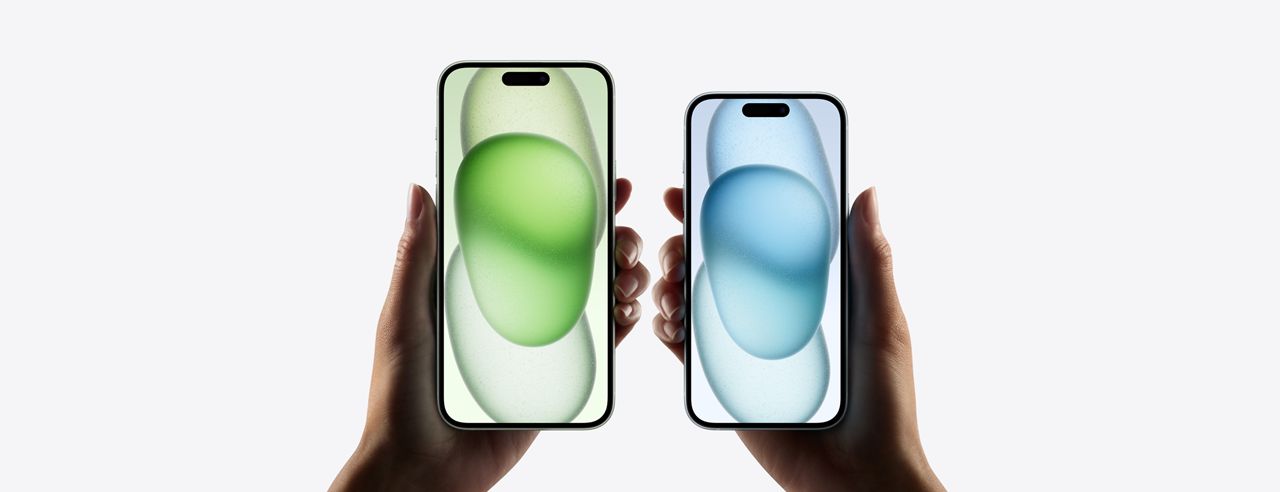Apple continues to lead the charge with its innovative iPhone series.
The launch of the iPhone 15 has brought a plethora of enhancements and features that set it apart from its predecessor, the iPhone 14.
What’s changed about the iPhone 15?
- 48-megapixel main camera sensor (up from 12 megapixels in iPhone 14)
- Intelligent portrait mode with automatic depth information capture
- Brighter display and sleeker design in Pro models
- Faster A15 Bionic chip enhancing performance and battery life
- USB-C connector replacing Lightning port, allowing compatibility with a wider range of devices and faster data transfer
- Reduced power consumption by up to 35%
- Comes with a color-matched braided USB-C to USB-C cable in the box
Below we look into differences between the two models, focusing on the improvements that the iPhone 15 brings to the table.
Table of Contents
Camera Enhancements
Main Camera Sensor
The iPhone 15 takes photography to a new level with its 48-megapixel main camera sensor, a substantial upgrade from the 12-megapixel sensor found in the iPhone 14.
This improvement promises to deliver crisper and more detailed images.
Intelligent Portrait Mode
Moreover, the iPhone 15 has the ability to detect when a person is in the frame and automatically capture depth information.
This feature enables users to effortlessly convert the image into a portrait, enhancing the photography experience.
Display and Design
Brighter Display
The iPhone 15 boasts a brighter display, promising a more vibrant and visually pleasing user experience compared to the iPhone 14.
Sleeker and Lighter Pro Models
For those opting for the Pro versions, the iPhone 15 Pro and iPhone 15 Pro Max offer a sleeker and lighter design, characterized by contoured edges that not only enhance the aesthetic but also improve the grip and handling of the device.
Performance and Battery Life
Advanced Chip Technology
Under the hood, the iPhone 15 is powered by the faster A15 Bionic chip, which promises to enhance both performance and battery life.
Furthermore, the Pro models are equipped with a new type of processor that could potentially bring about even more significant improvements in these areas.
Reduced Power Consumption
Remarkably, the chip in the iPhone 15 can reduce power consumption by up to 35%, making it a more energy-efficient choice compared to the iPhone 14.
Connectivity: USB-C Integration
Why USB-C is Better than Lightning
The iPhone 15 has transitioned to a USB-C connector, replacing the previous Lightning port.
This change is a win for both consumers and the environment.
USB-C offers better compatibility, faster data transfer rates, and increased power delivery, capable of delivering up to 240W of charging power compared to Lightning’s 25W.
Furthermore, USB-C is more compatible with a wide range of devices, including gaming consoles, desktop PCs, and cars, whereas Lightning cables are restricted to Apple devices.
This transition to USB-C signifies a move towards standardization, potentially reducing e-waste as fewer different cables need to be manufactured.
In the Box
To complement this transition, Apple includes a color-matched braided USB-C to USB-C cable in the box with the iPhone 15, facilitating connectivity with a variety of devices such as:
- Mac
- iPad
- AirPods Pro (2nd generation)
- External storage devices
- Displays
USB-C vs. Lightning vs. Thunderbolt: A Brief Overview
Understanding the differences between USB-C, Lightning, and Thunderbolt can help users make informed decisions about their connectivity needs.
Here, we provide a brief comparison:
USB-C
- Compatible with a wide range of mobile and host devices.
- Can provide up to 100W of power, sufficient for most laptops.
- Faster data transfer rates compared to Lightning.
Lightning
- Exclusive to Apple devices and accessories.
- Not as efficient for data transfer or charging.
Thunderbolt
- Supports high-resolution displays and high-performance data devices.
- More advanced than USB-C, offering connectivity options for displays, TVs, or external storage devices to a Mac.
FAQs – iPhone 15 vs. iPhone 14
What are the main improvements of the iPhone 15 over the iPhone 14?
The iPhone 15 brings several notable improvements over its predecessor, the iPhone 14.
Here are the key differences:
- Camera: The iPhone 15 boasts a 48-megapixel main camera sensor, a significant upgrade from the 12-megapixel sensor in the iPhone 14. Additionally, it has the ability to detect when a person is in the frame and automatically capture depth information, facilitating the creation of portrait images.
- Display: The new model features a brighter display, with the Pro and Pro Max versions offering a sleeker and lighter design characterized by contoured edges.
- Chip: The iPhone 15 is powered by the faster A15 Bionic chip, while the Pro models house a new type of processor that enhances performance and battery life.
- USB-C: Replacing the Lightning port, the iPhone 15 introduces a USB-C connector, promoting faster data transfer speeds and a more universal charging solution.
- Power Consumption: Thanks to the new chip, the iPhone 15 can reduce power consumption by up to 35%.
Why has Apple opted for a USB-C connector in the iPhone 15?
The integration of a USB-C connector in the iPhone 15 is a strategic move to offer a standardized port that facilitates charging and connection to a wide array of devices, including Mac, iPad, and second-generation AirPods Pro.
This shift not only ensures faster data transfer and potentially quicker charging but also stands as a win for both consumers and the environment by reducing the necessity for multiple cables and, consequently, e-waste.
Moreover, a color-matched braided USB-C to USB-C cable is included in the iPhone 15 package.
Why is USB-C considered better than the Lightning connector?
USB-C holds a competitive edge over the Lightning connector due to its broader compatibility, faster data transfer rates, and superior power delivery — capable of providing up to 240W of charging power compared to Lightning’s 25W.
Although Lightning connectors are more durable, USB-C’s compatibility with a vast range of devices, including gaming consoles and desktop PCs, makes it the preferred choice for many.
Looking forward, USB-C is poised to become the universal standard in the coming years.
How do USB-C, Lightning, and Thunderbolt connectors differ?
While all three — USB-C, Lightning, and Thunderbolt — are popular choices for charging cables, they cater to different needs and devices:
- USB-C: Predominantly used with mobile devices, laptops, and host devices, offering up to 100W of power sufficient for most laptops.
- Lightning: Exclusive to Apple devices, it is less efficient in terms of data transfer and charging compared to USB-C.
- Thunderbolt: A newer technology supporting high-resolution displays and high-performance data devices, presenting a more advanced solution than USB-C.
Your choice among these would depend on your specific requirements and the devices you are using.
What comes in the box with the iPhone 15?
The iPhone 15 package includes a color-matched braided USB-C to USB-C cable, aligning with the phone’s new USB-C connectivity feature.
Conclusion
The choice between these connectors depends on individual preferences and specific use cases.
The iPhone 15, with its USB-C integration, seems to be steering users towards a more standardized and efficient connectivity future, promising benefits for both consumers and the environment.
Related


